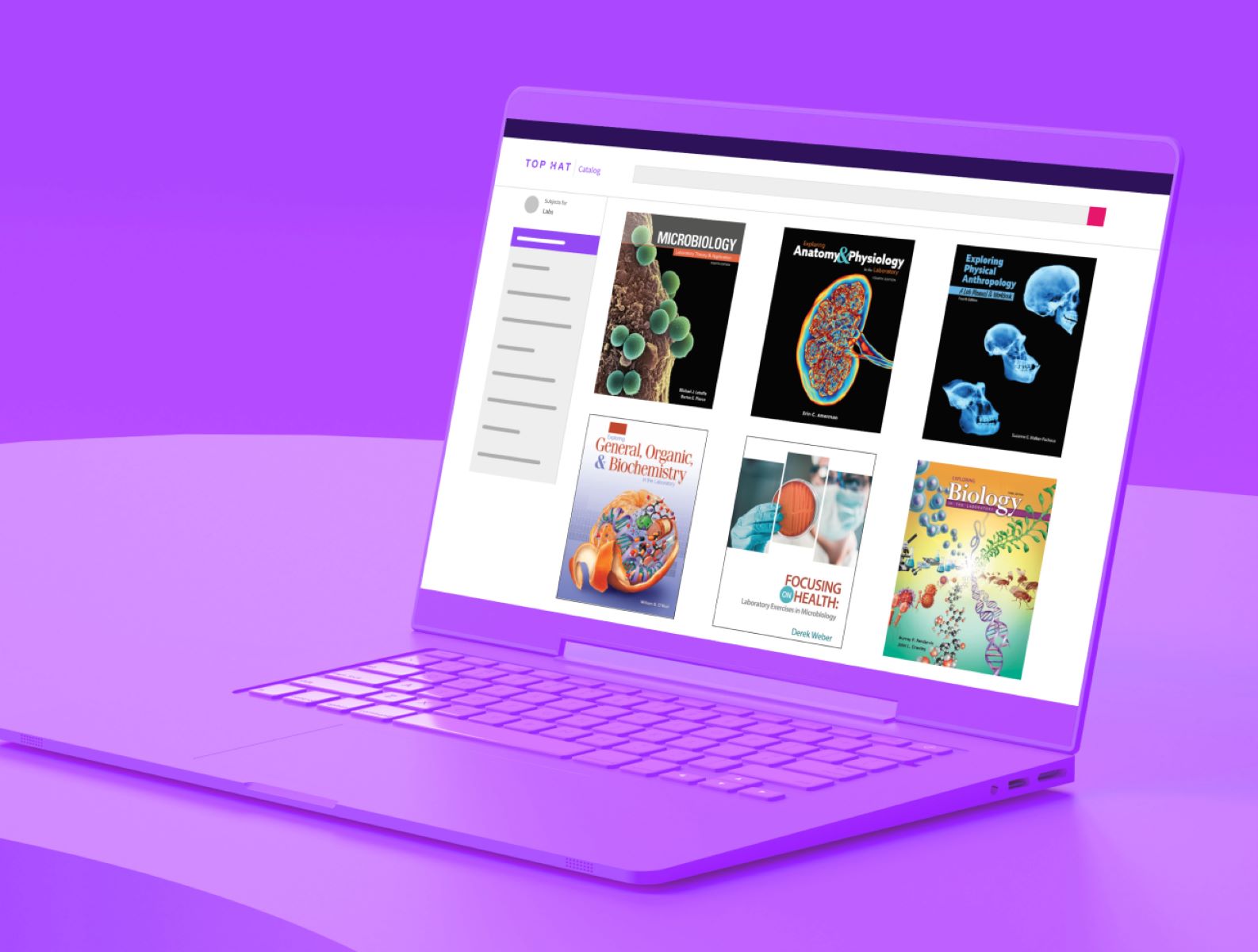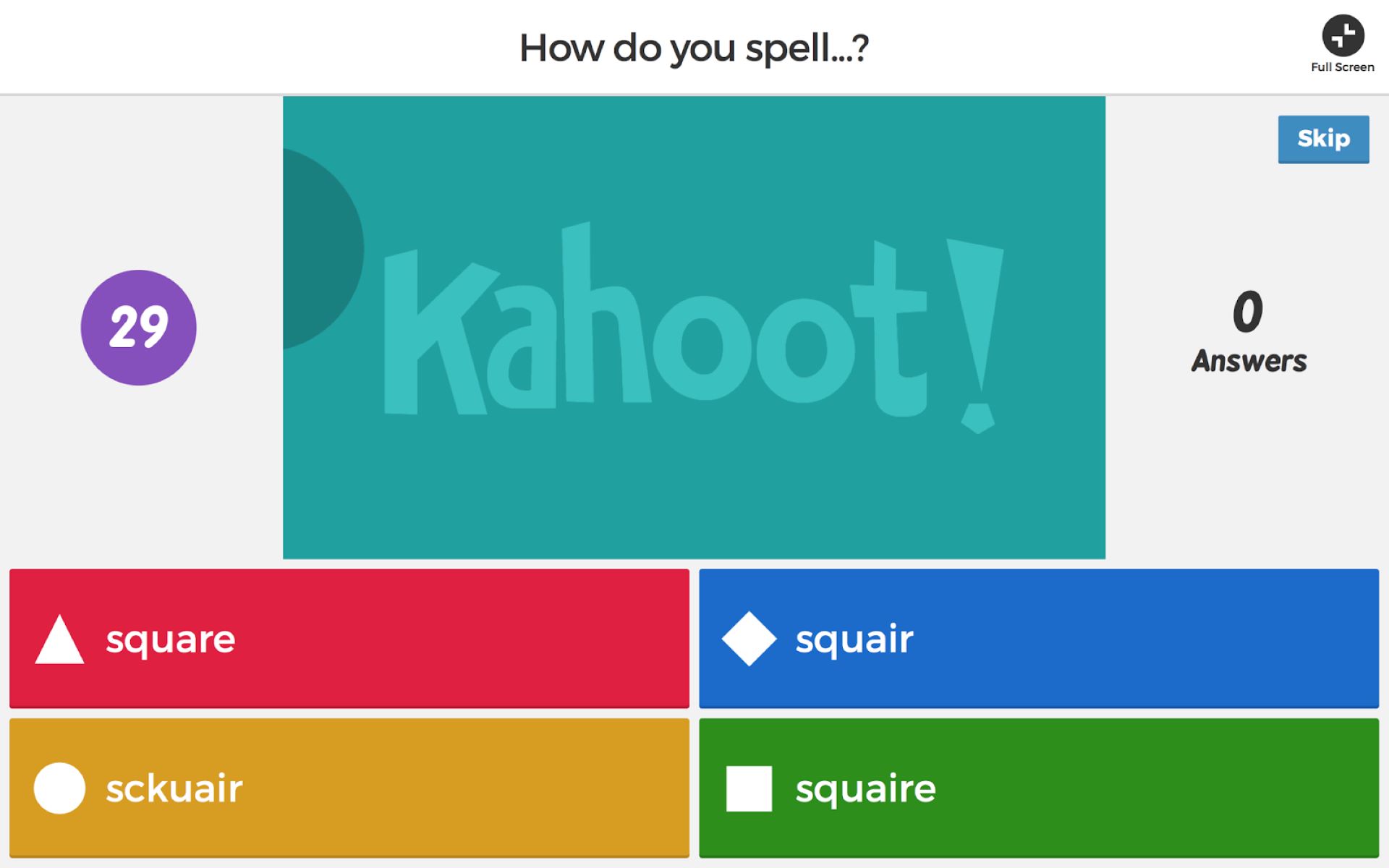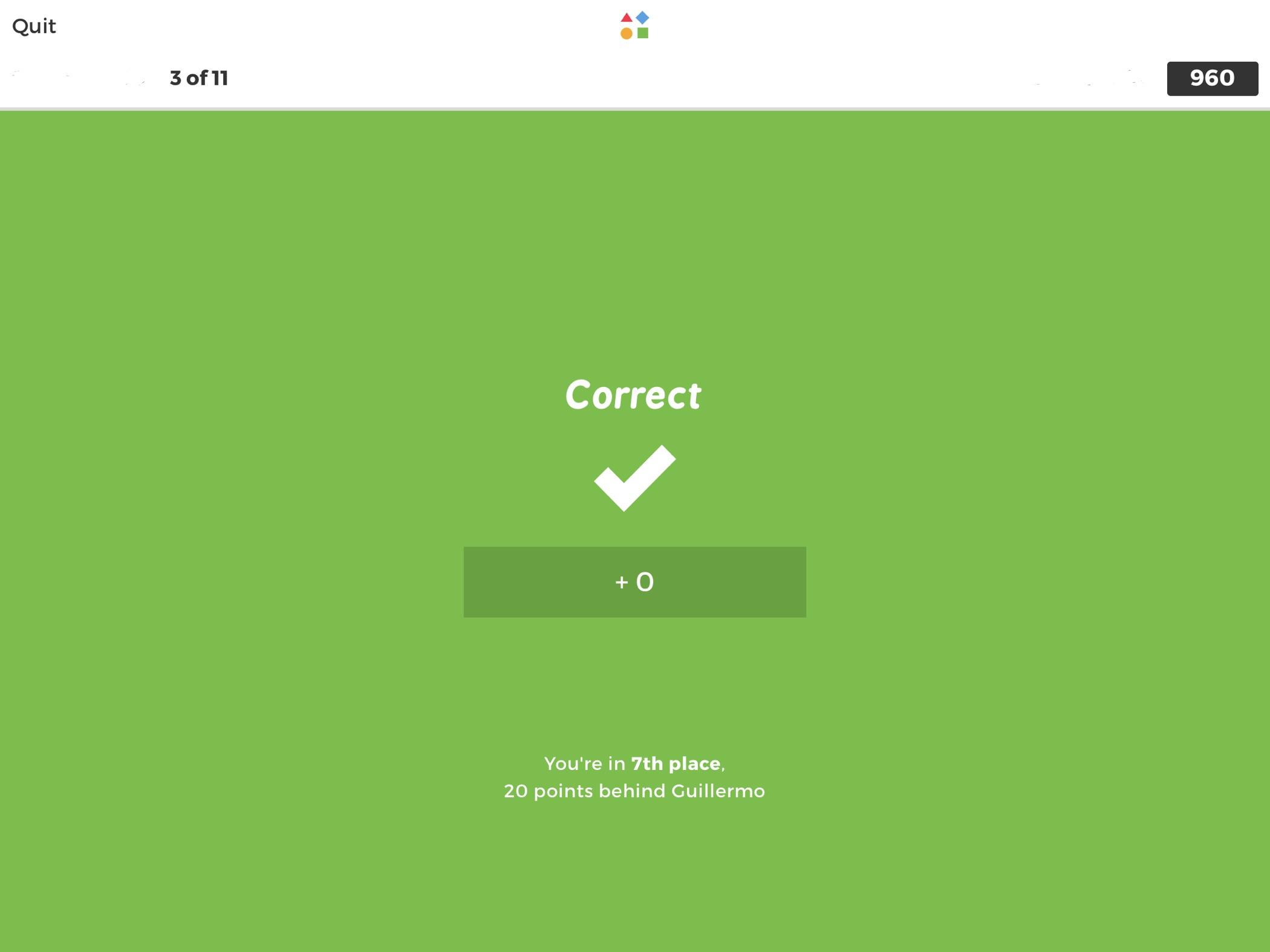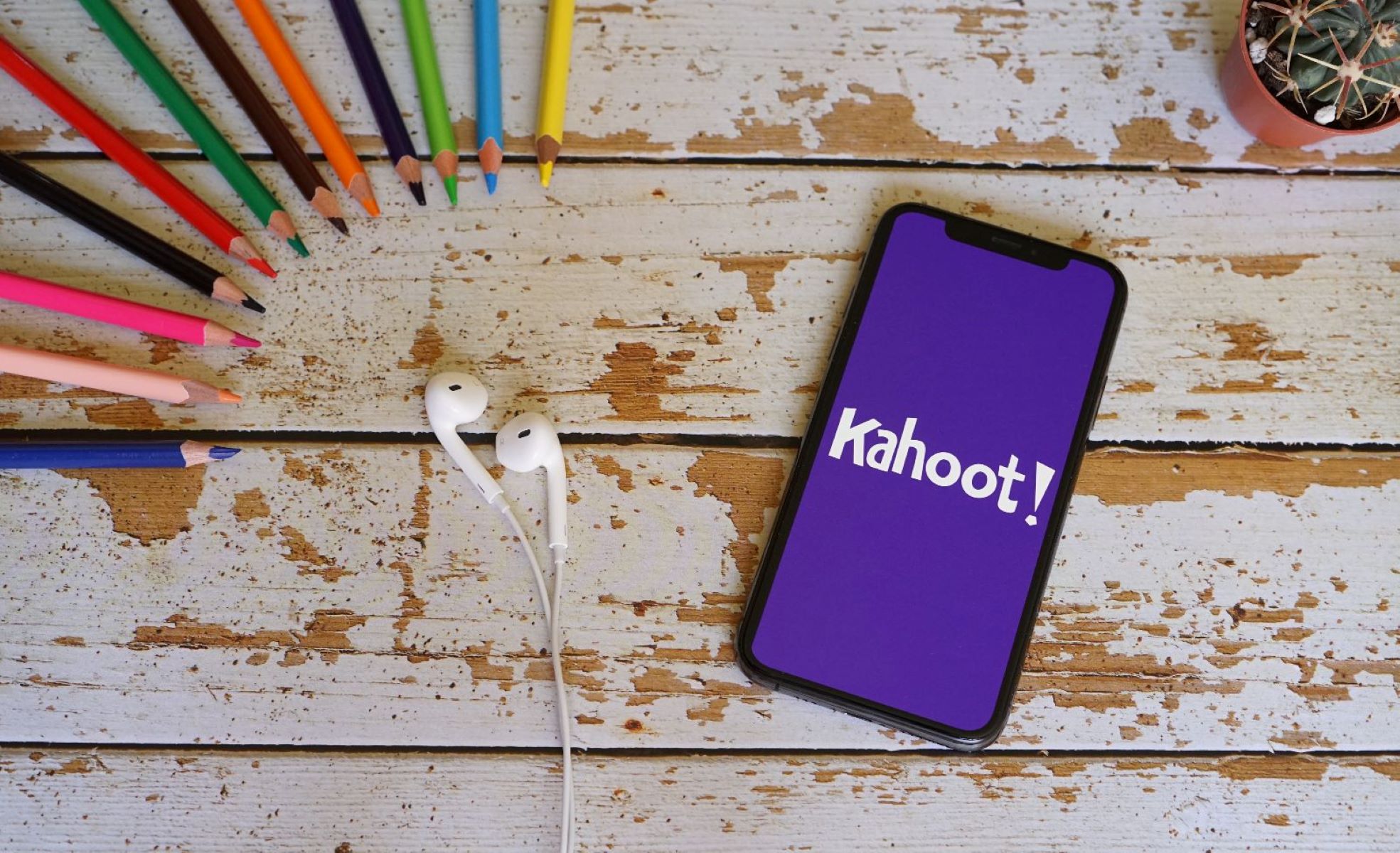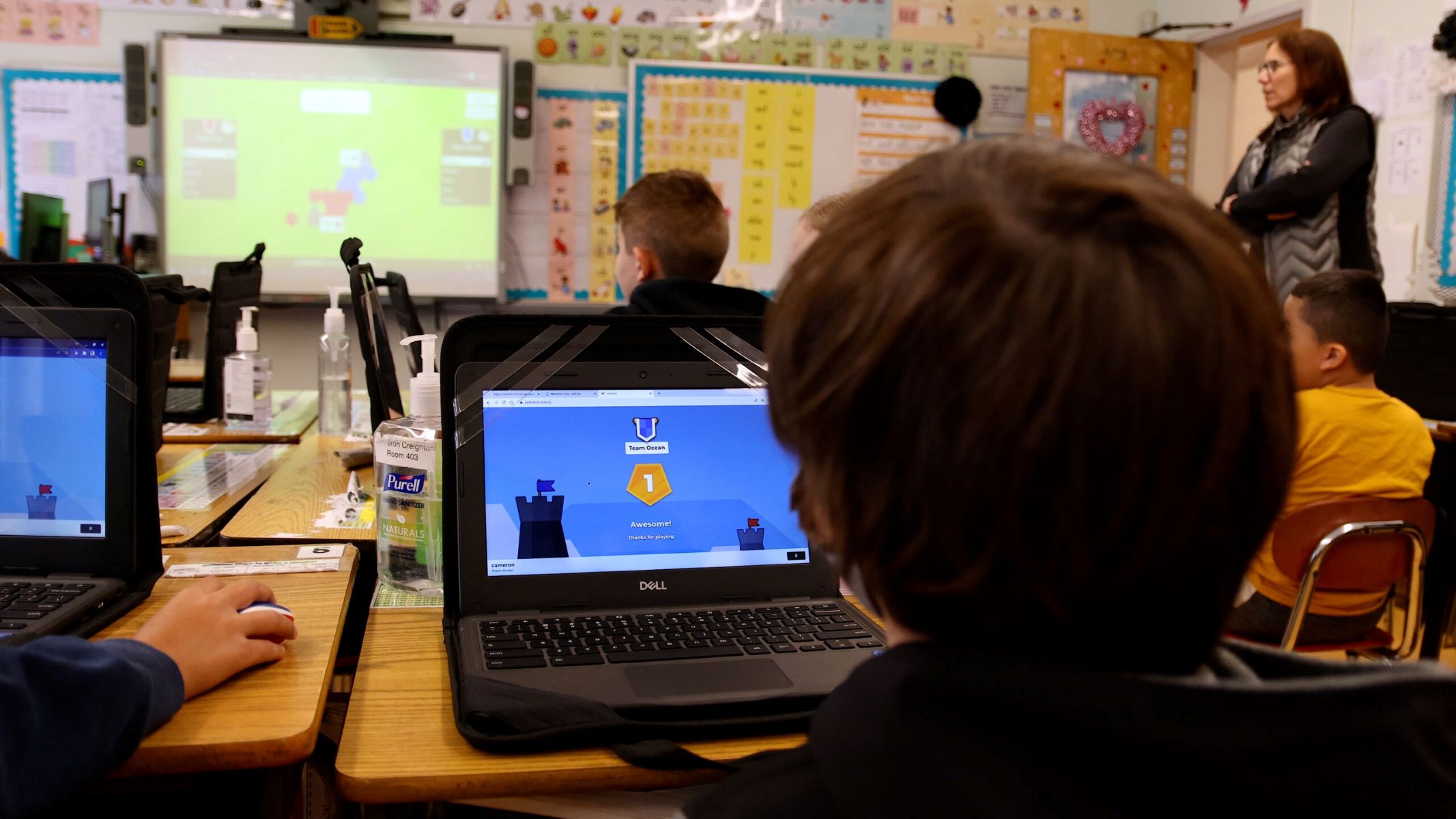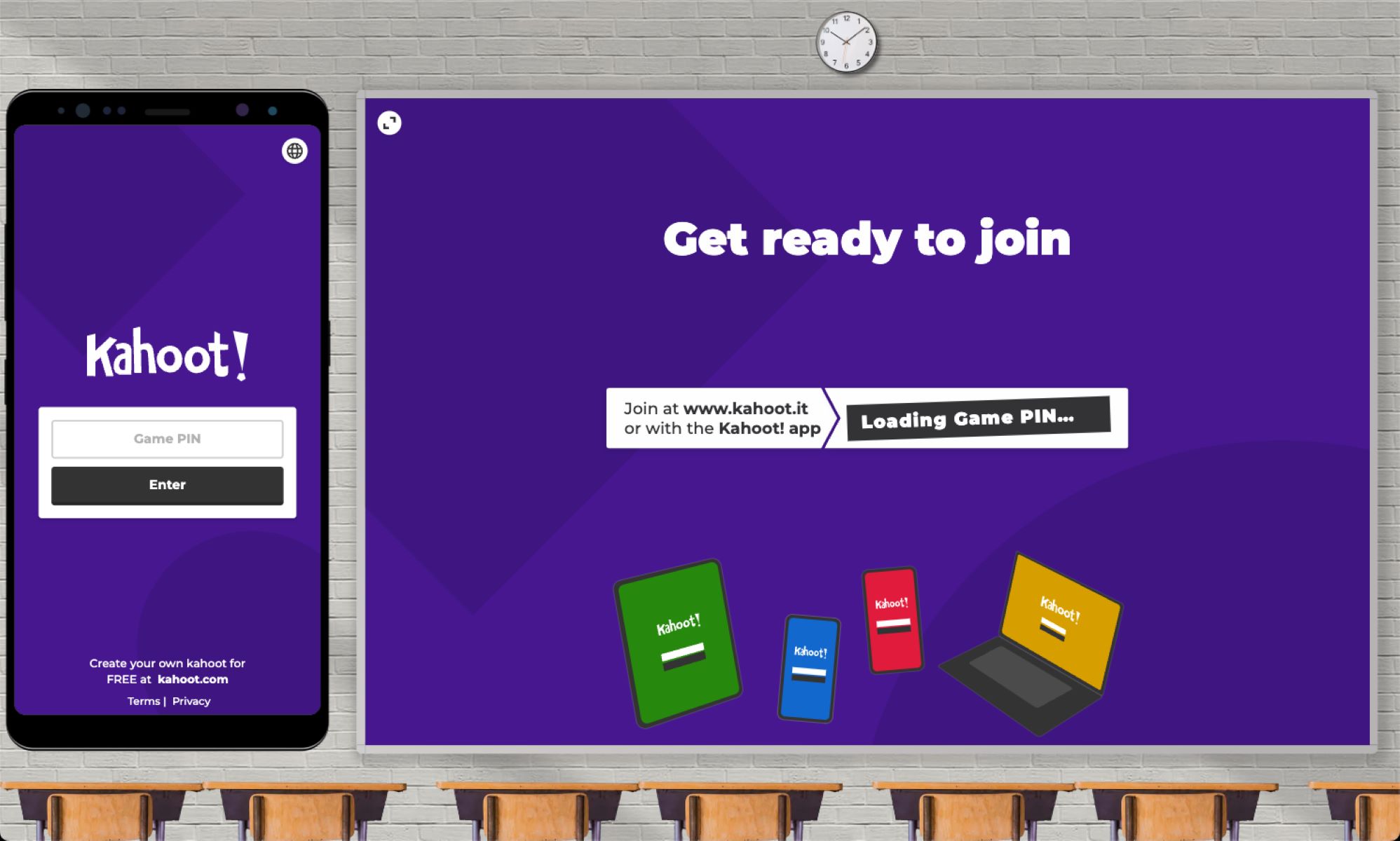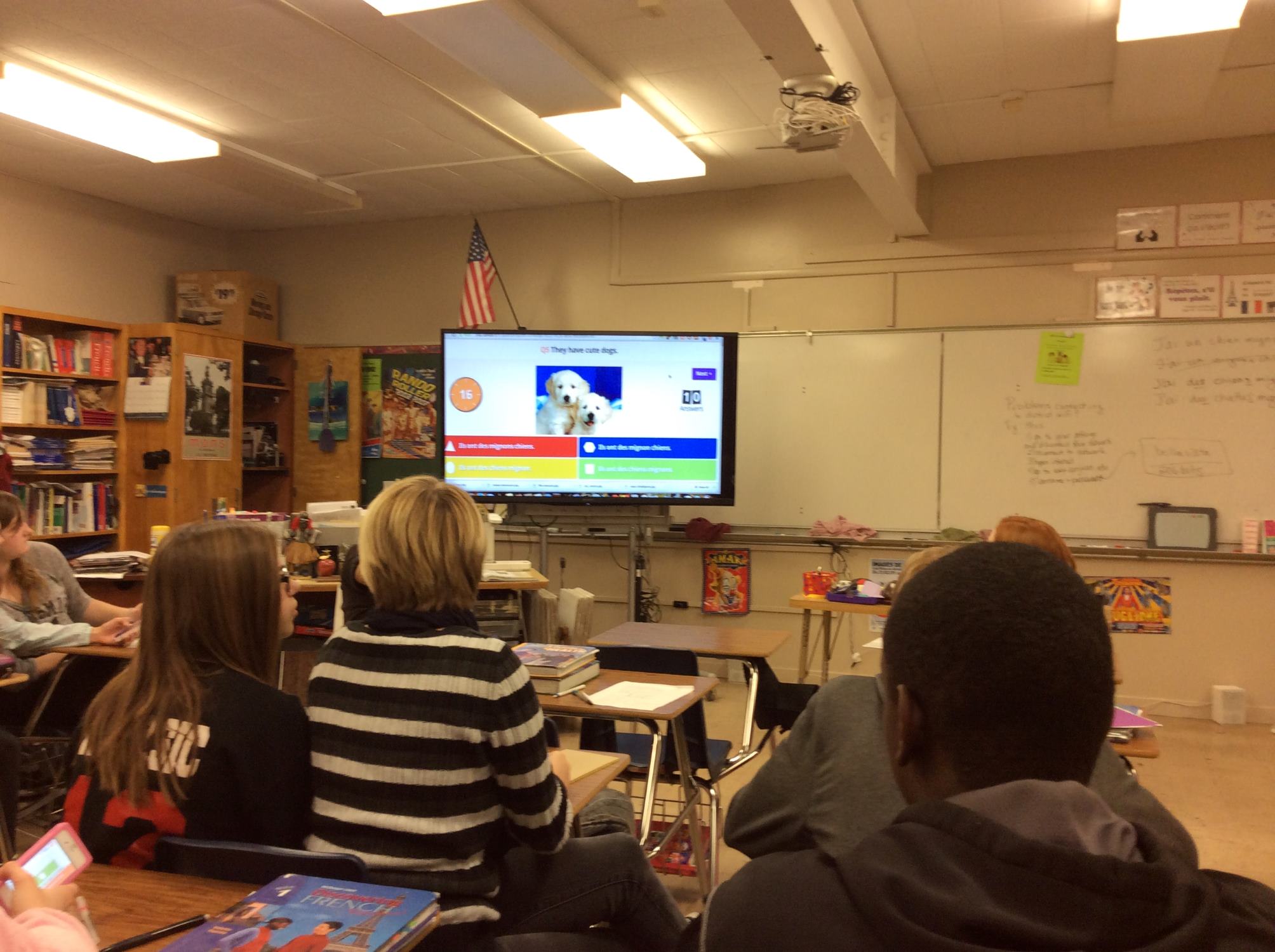Introduction
Kahoot is an interactive learning platform that has taken the education world by storm. Designed to make learning engaging and fun, Kahoot has become a popular tool for teachers, students, and even corporate trainers. It offers a unique way to assess knowledge and promote active participation through interactive quizzes, discussions, and surveys.
With Kahoot, learning becomes a game, where students can compete individually or in teams to answer questions and earn points. This gamified approach to education has proven to be highly effective in capturing students’ attention and promoting active learning.
In this article, we will explore the ins and outs of Kahoot, including how it works, how to create and play Kahoot games, and its benefits in educational settings. We will also provide tips on how to use Kahoot effectively to maximize learning outcomes and engagement.
Whether you’re a teacher looking for a new way to engage your students or a student seeking a fun and interactive learning experience, Kahoot is sure to provide a refreshing and effective approach to education.
What is Kahoot?
Kahoot is an online learning platform that combines games and quizzes to create an interactive and engaging learning experience. It was developed with the goal of making learning fun and accessible for students of all ages.
At its core, Kahoot is a game-based learning platform that allows educators to create and share interactive quizzes, discussions, and surveys. These activities, known as “Kahoot games,” are designed to test and reinforce knowledge across various subjects and topics.
One of the key features of Kahoot is its multiplayer functionality. Students can participate in Kahoot games individually or in teams, competing against each other to earn points and climb up the leaderboard. This aspect of competition adds an exciting element to the learning process and motivates students to actively engage in the material.
Using Kahoot is simple and user-friendly. Educators can create their own Kahoot games or browse through the vast library of pre-existing games created by other educators. The games can be customized with a variety of question types, including multiple choice, true or false, and open-ended questions.
One of the unique aspects of Kahoot is its social learning component. Players can join Kahoot games using any internet-connected device, such as smartphones, tablets, or computers. This allows for seamless integration and accessibility, regardless of the students’ location or the devices they have access to.
Overall, Kahoot provides a dynamic and interactive learning experience that not only promotes knowledge retention but also fosters collaboration among students. It has become a valuable tool for educators looking to make learning engaging, interactive, and effective.
How does Kahoot work?
Kahoot works by using a combination of technology and gamification to create an interactive and engaging learning experience. The platform enables educators to create and share interactive quizzes and games, which students can access using their devices.
When using Kahoot, the process begins with the educator creating a Kahoot game. They can choose from a variety of question formats, such as multiple-choice, true or false, and open-ended questions. They can also add images, videos, and audio to enhance the learning experience.
Once the Kahoot game is created, the educator can share a unique game pin or URL with the students. Students can join the game by entering the pin or accessing the URL through their devices. They don’t need to create an account to participate, making it quick and convenient for everyone involved.
During the Kahoot game, questions are displayed on the main screen, and students see response options on their devices. They have a limited amount of time to answer each question, adding an element of excitement and urgency to the game. Points are awarded based on correct answers and speed, encouraging competitiveness among participants.
After each question, a leaderboard is displayed to show the current rankings. This real-time feedback further motivates students to stay engaged and strive for the top spot. At the end of the game, a final leaderboard is shown, showcasing the top performers.
Kahoot also allows for discussion and collaboration. Students can comment on questions or provide feedback, promoting active learning and peer interaction. This feature encourages students to analyze and discuss their answers, leading to deeper understanding and knowledge retention.
Furthermore, Kahoot offers a comprehensive reporting system for educators. They can access data on student performance, including individual and class-level performance, to identify strengths and areas for improvement. This data-driven approach allows educators to tailor their instruction and provide targeted support to students.
Overall, Kahoot offers a unique and engaging learning experience. It combines elements of technology, gamification, and social interaction to make learning interactive, exciting, and effective.
Creating a Kahoot game
Creating a Kahoot game is a straightforward process that allows educators to customize quizzes, discussions, and surveys to suit their specific needs and objectives. With a few simple steps, educators can create engaging and interactive learning experiences for their students.
To create a Kahoot game, educators need to sign in to their Kahoot account or create a new one if they don’t have one already. Once logged in, they can access the “Create” button to start building their game.
The first step in creating a Kahoot game is to choose a game type. Educators can select between a quiz, survey, discussion, or jumble. Each game type serves a different purpose and offers unique features to engage students.
Next, educators can input the questions and answer options. They can customize each question with media, such as images and videos, to enhance the learning experience. Depending on the game type chosen, additional options may be available, such as including an open-ended question for discussions or using the jumble game type to create a matching activity.
Once the questions and answer options are set, educators can assign points for correct answers and choose the time limit for each question. This helps create a sense of urgency and excitement during the game, encouraging active student participation.
Additionally, educators can enable several game settings to enhance the learning experience. They can activate the “Nickname Generator” to automatically assign unique names to each participant, making the game more enjoyable and anonymous. They can also enable the “2-step Join” feature to prevent unauthorized access to the game.
After customizing the game, educators can save and preview it to ensure everything looks and functions as intended. If any adjustments are needed, they can go back and make changes before finalizing the game.
Once the Kahoot game is ready to be played, educators can share it with their students. They can provide a unique game pin or share the game’s URL. Students can join the game by entering the pin or accessing the URL on their devices.
Overall, creating a Kahoot game is a user-friendly process that allows educators to tailor their quizzes, discussions, and surveys to suit their teaching objectives. With the flexibility and customization options offered by Kahoot, educators can create engaging and interactive learning experiences for their students.
Playing a Kahoot game
Playing a Kahoot game is an exciting and interactive experience that encourages active participation and friendly competition among students. It involves answering questions and earning points to climb up the leaderboard.
To start playing a Kahoot game, students need to join the game by entering the unique game pin or accessing the game’s URL provided by the educator. They can use any internet-connected device, such as smartphones, tablets, or computers, to participate.
Once the game begins, students will see the questions displayed on the main screen, while the response options are shown on their individual devices. They have a limited amount of time to select the correct answer.
As students respond to each question, they earn points based on their accuracy and speed. The quicker they answer correctly, the more points they receive. The leaderboard is updated in real-time, displaying the current rankings and adding an element of excitement and competitiveness to the game.
Kahoot also offers various game features to enhance the experience. For example, educators can include images or videos in the questions to make them more engaging. Students can also see the countdown timer on their devices, creating a sense of urgency.
During the game, students can also use the chat feature to comment on questions or provide feedback. This fosters discussion and collaboration among participants and enables them to share their thoughts and insights.
At the end of the game, a final leaderboard is displayed, showcasing the top performers. This recognition encourages students to strive for excellence and motivates healthy competition.
Kahoot games can be played in a variety of settings, whether it’s in a traditional classroom, during virtual learning sessions, or in corporate training environments. The platform’s versatility and accessibility make it a valuable tool for engaging learners of all ages and backgrounds.
Playing a Kahoot game not only assesses students’ knowledge and understanding but also provides an interactive and enjoyable learning experience. It promotes active participation, critical thinking, and collaboration among participants, making it an effective tool for educators seeking to enhance their instructional strategies.
Kahoot for education
Kahoot is revolutionizing the education landscape by providing a dynamic and interactive platform that caters to the needs of both educators and students. Its gamified approach to learning makes it an effective tool for enhancing engagement, knowledge retention, and classroom participation.
Kahoot offers a wide range of applications across different educational settings. In traditional classrooms, it can be used as a formative assessment tool, allowing educators to gauge students’ understanding of the material and identify areas that need further clarification.
With the rise of virtual learning, Kahoot has become an essential tool for engaging students in remote or online classes. It provides a sense of connection and excitement, making learning from home more interactive and enjoyable.
Furthermore, Kahoot can be utilized in corporate training environments, allowing companies to create engaging quizzes and surveys to reinforce employee knowledge and track progress. It promotes a fun and interactive learning culture within the workplace.
Kahoot also offers features that cater specifically to the needs of teachers. Educators can access a vast database of pre-made games and quizzes developed by other educators. This saves time and effort, as they can easily search for and modify existing Kahoot games to align with their instructional objectives.
Additionally, Kahoot provides access to valuable data and analytics. Educators can track student performance, identify knowledge gaps, and tailor their instruction accordingly. This data-driven approach helps personalize the learning experience and provide targeted support to students who may be struggling.
Moreover, Kahoot promotes active learning and student engagement. Its gamified nature encourages students to actively participate in the learning process, fostering a sense of achievement and motivation. By transforming learning into a game, students become more excited and enthusiastic about acquiring knowledge.
The social learning aspect of Kahoot is another valuable feature. It allows students to engage in discussions, share their thoughts, and collaborate with their peers. This promotes critical thinking, teamwork, and communication skills, essential for a well-rounded education.
Overall, Kahoot is an innovative learning platform that brings a fresh and engaging approach to education. Its versatility, interactive features, and data-driven insights make it a valuable tool for educators, students, and corporate trainers alike. Whether in a traditional classroom or a virtual learning environment, Kahoot has the power to transform the educational experience and create a vibrant and effective learning community.
Benefits of using Kahoot
Using Kahoot as an educational tool offers numerous benefits for both educators and students. It revolutionizes the learning experience by making it more engaging, interactive, and enjoyable. Let’s explore some of the key benefits of using Kahoot:
- Increased engagement: Kahoot transforms learning into a game, capturing students’ attention and keeping them actively involved in the material. The competitive element and real-time feedback motivate students to participate and strive for success.
- Active learning: With Kahoot, students become active participants in the learning process. They are encouraged to think critically, make decisions, and apply knowledge to answer questions, fostering a deeper understanding of the subject matter.
- Improved knowledge retention: The gamified nature of Kahoot enhances memory retention by creating an enjoyable and memorable learning experience. The use of visuals, audio, and interactive questions helps reinforce content and aids in long-term knowledge retention.
- Personalized learning: Kahoot’s reporting and analytics provide valuable insights into student performance. Educators can identify individual strengths and weaknesses, allowing for targeted instruction and personalized feedback to meet each student’s needs.
- Promotion of collaboration and teamwork: Kahoot promotes collaboration among students through its social learning features. Students can engage in discussions, share ideas, and work together to solve problems, fostering teamwork and communication skills.
- Time-saving and user-friendly: Kahoot offers a vast library of pre-made games created by educators, saving valuable time in lesson planning. The platform’s user-friendly interface makes it easy for both educators and students to navigate and participate in games.
- Flexibility and accessibility: Kahoot can be accessed from any internet-connected device, making it convenient for students to participate in games both in the classroom and remotely. It accommodates various learning styles and allows for inclusive and accessible learning experiences.
- Formative assessment: Kahoot serves as a valuable formative assessment tool, enabling educators to gauge student understanding and identify learning gaps in real-time. This allows for timely interventions and adjustments in instruction as needed.
These benefits highlight how Kahoot creates an engaging and effective learning environment that promotes academic growth, critical thinking, and collaboration. It revolutionizes the way educators teach and students learn, leading to better educational outcomes and a more enjoyable classroom experience.
Tips for using Kahoot effectively
To make the most out of Kahoot and ensure a successful learning experience, here are some tips for using Kahoot effectively:
- Set clear learning objectives: Before creating a Kahoot game, establish clear learning objectives to align the questions and content with the desired outcomes. Clearly define what you want students to achieve by the end of the game.
- Create engaging and diverse questions: Use a variety of question types, including multiple-choice, true or false, and open-ended questions. Incorporate images, videos, and audio to make the questions more engaging and interactive.
- Keep the pace and timing in mind: Set appropriate time limits for each question to create a sense of urgency and keep the game moving at an engaging pace. Consider the complexity of the content and adjust the time limits accordingly.
- Encourage collaboration and discussion: Utilize the chat feature to foster discussion and collaboration among students. Encourage them to share their thought processes, reasoning, and insights, promoting a deeper understanding of the material.
- Provide feedback and review: Take advantage of the immediate feedback feature in Kahoot. Provide explanations for correct and incorrect answers to reinforce understanding and knowledge. Review key concepts after each question to reinforce learning outcomes.
- Use Kahoot as a formative assessment tool: Monitor student performance during the game to identify areas of strength and weakness. Use this data to tailor instruction and provide targeted support and interventions as needed.
- Make it inclusive and accessible: Ensure that all students can participate by enabling options such as the “Nickname Generator” and providing alternative means of access for students with diverse needs. Consider accessibility guidelines when incorporating media and ensuring readability of questions and answer options.
- Encourage sportsmanship and positive competition: Promote a friendly and supportive environment during the game. Emphasize the importance of good sportsmanship and respectful competition to create a positive and inclusive learning atmosphere.
- Utilize pre-made Kahoot games: Save time by exploring the vast library of pre-made Kahoot games created by other educators. Modify existing games to suit your specific needs and learning objectives.
- Reflect and adapt: After each Kahoot game, reflect on its effectiveness by reviewing student performance and feedback. Adjust future games based on what worked well and areas for improvement.
By implementing these tips, educators can create a more engaging and effective learning experience using Kahoot. The platform’s features, combined with thoughtful planning and instructional strategies, can maximize student participation, knowledge retention, and overall academic success.
Conclusion
Kahoot is a powerful and innovative learning platform that has transformed education by making it interactive, engaging, and enjoyable. Its gamified approach to learning captivates students’ attention and encourages active participation, resulting in improved knowledge retention and a deeper understanding of the material.
Through Kahoot, educators have the ability to create customized quizzes, discussions, and surveys that align with their specific learning objectives. The platform’s user-friendly interface and vast library of pre-made games make it convenient and time-saving for educators to implement in their classrooms.
Using Kahoot offers a range of benefits, including increased engagement, active learning, personalized instruction, and the promotion of collaboration and teamwork. It allows educators to assess student performance in real-time, providing valuable data to inform instruction and interventions.
To use Kahoot effectively, educators should set clear learning objectives, create diverse and engaging questions, and encourage collaboration and discussion among students. Timing and pacing should be considered, and feedback and review should be provided to reinforce learning outcomes.
Kahoot is not only limited to traditional classrooms but can also be utilized in virtual learning environments and corporate training sessions. Its flexibility and accessibility allow for inclusivity and adaptability in various educational settings.
In conclusion, Kahoot has revolutionized the way educators teach and students learn. By embracing its gamified and interactive approach, educators can create an environment that fosters excitement, critical thinking, and active participation. Whether in person or online, Kahoot has the power to transform learning and make education an enjoyable and impactful experience.







